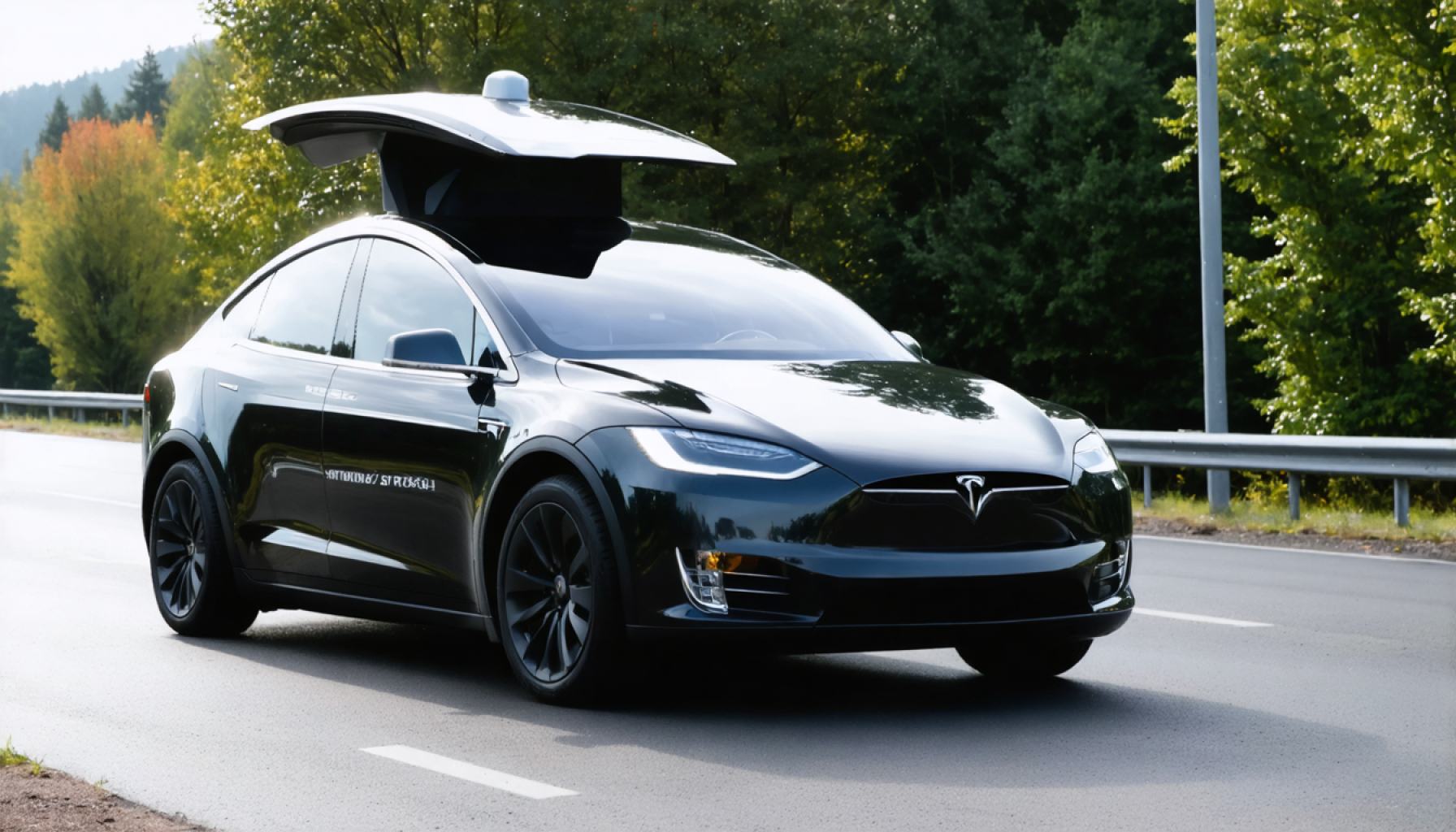- Tesla is actively testing its Full Self-Driving (FSD) technology in Amsterdam, aiming to expand its presence in Europe and the Middle East.
- Videos of these tests show Tesla vehicles with human oversight, emphasizing the importance of safety in its technological pursuits.
- Regulatory approval from the Dutch RDW is crucial for Tesla’s full deployment in the region.
- Globally, Tesla has launched its FSD Supervised technology in countries like China and Mexico, highlighting its international strategy.
- Former executives warn that complex European regulations may delay Tesla’s deployment plans.
- The situation underscores the tension between ambition and regulation, with Tesla’s European journey evoking both anticipation and uncertainty.
- This effort is part of Tesla’s broader vision to revolutionize mobility across continents.
Cobblestone streets and centuries-old architecture bear witness to a revolution on wheels. Under the curious gaze of passersby, Tesla vehicles glide through Amsterdam’s bustling avenues, engaging in a delicate dance with European regulatory frameworks. These sleek, electric visionaries are part of Tesla’s earnest pursuit of bringing Full Self-Driving (FSD) technology to new horizons across Europe and the Middle East.
A newly released video rivets attention, offering tantalizing glimpses of the ongoing tests. Yet, the message is clear: these are not driverless, futuristic voyages. Each vehicle houses a vigilant human guardian, underscoring Tesla’s commitment to safety amidst its technological ambitions. While the company’s innovative spirit soars, regulatory approval remains the missing key to unlock full-scale deployment.
The Dutch RDW, the vigilant gatekeeper of autonomous mobility, holds the potential to open the sluice gates for Tesla’s aspirations. Anticipation swells as Tesla inches closer to securing the necessary endorsements to delve deeper into the European market’s labyrinthine regulations.
The unfolding narrative isn’t confined to Dutch soil alone. In a recent charge, Tesla unveiled its FSD Supervised technology in distant lands like China and Mexico, signaling its global strategy to harmonize regulatory compliance with technological advancement. Yet in the heart of Europe, complexities endure. Former executives have pointed to looming regulatory frameworks that hint at possible delays, suggesting that the road to self-driving utopia might be longer than originally anticipated.
In this charged atmosphere, patience wears thin but perseverance prevails. The tale woven through Amsterdam’s canals transcends city limits, reverberating across the continent, embodying the intricate balance of ambition against regulation. As Tesla seeks to chart new paths, the broader landscape awaits only time to reveal whether bureaucratic corridors will amplify or stymie this electric dream.
For now, the story is one of anticipation—an electrifying prelude to the future not just of cars, but of mobility itself. Tesla’s European odyssey is just beginning, promising to reshape the air as we know it, one regulation at a time.
Tesla’s Journey Towards Full Self-Driving in Europe: Challenges, Strategies, and the Road Ahead
Introduction
The vibrant streets of Amsterdam are more than just picturesque pathways; they are the testing grounds for an automotive revolution spearheaded by Tesla. As Tesla pioneers the Full Self-Driving (FSD) technology across Europe, it navigates a complex regulatory environment, promising to redefine the future of mobility. Yet, behind these ambitious strides lie intricate challenges that dictate the tempo of progress.
Deep Dive into FSD Technology
Tesla’s FSD technology isn’t just about innovation; it’s a comprehensive suite of advancements that include advanced neural networks, cutting-edge sensor systems, and real-time data processing capabilities. These elements collectively aim to enhance vehicle autonomy, offering features like automatic lane changes, traffic light recognition, and automatic parking.
Real-World Use Cases
1. Urban Mobility: Tesla’s FSD can dramatically transform urban mobility by reducing traffic congestion through optimized navigation and efficient route planning.
2. Safety Enhancements: With the potential to minimize human error, Tesla’s technology promises to lower accident rates, which is a pressing concern in dense urban settings.
European Regulatory Landscape
One of the critical hurdles in Tesla’s path is securing regulatory approvals across Europe. Each country presents unique challenges:
– The Dutch RDW is a pivotal player in setting precedents for autonomous vehicle testing and deployment.
– Germany, a key market, has stringent safety and testing standards that Tesla must navigate.
– The UK’s “Automated and Electric Vehicles Act” outlines specific requirements that any autonomous vehicle technology must meet.
Market Forecasts & Industry Trends
The European market for electric and autonomous vehicles is projected to grow significantly:
– By 2030, it’s estimated that autonomous vehicles could account for 12% of new vehicle sales across Europe (source: McKinsey & Company).
– Increasing environmental regulations and consumer demand for sustainable mobility solutions are propelling the growth of electric vehicles.
Challenges and Limitations
Despite its promise, Tesla’s FSD faces numerous challenges:
– Regulatory Delays: Securing approvals from various European agencies is time-consuming, potentially delaying widespread adoption.
– Technological Limitations: Real-world scenarios present unpredictable variables that may hinder full autonomy.
– Ethical and Safety Concerns: There are ongoing debates around the ethical implications of autonomous decision-making in vehicles.
Competitive Comparison
Tesla’s FSD faces stiff competition from other automotive giants:
– Waymo and Cruise lead in the US, offering robust autonomous ride-sharing services.
– In Europe, companies like BMW and Mercedes-Benz are investing heavily in advanced driver assistance systems (ADAS).
Actionable Tips for Consumers
– Stay Informed: Monitor updates from Tesla about FSD availability in your region.
– Explore Electric Options: Even without full autonomy, Tesla vehicles offer exceptional electric driving experiences in urban settings.
– Engage with Communities: Join forums and groups to discuss and learn from early adopters of FSD technology.
Conclusion
As Tesla maneuvers through the complexities of European regulations, the journey towards full autonomy remains an electrifying prospect. While challenges persist, the momentum towards a future where self-driving cars become mainstream is undoubtable. For now, Tesla’s advances symbolize a tantalizing glimpse into the future of transportation.
For more insights on Tesla and electric vehicles, visit the official Tesla website.
